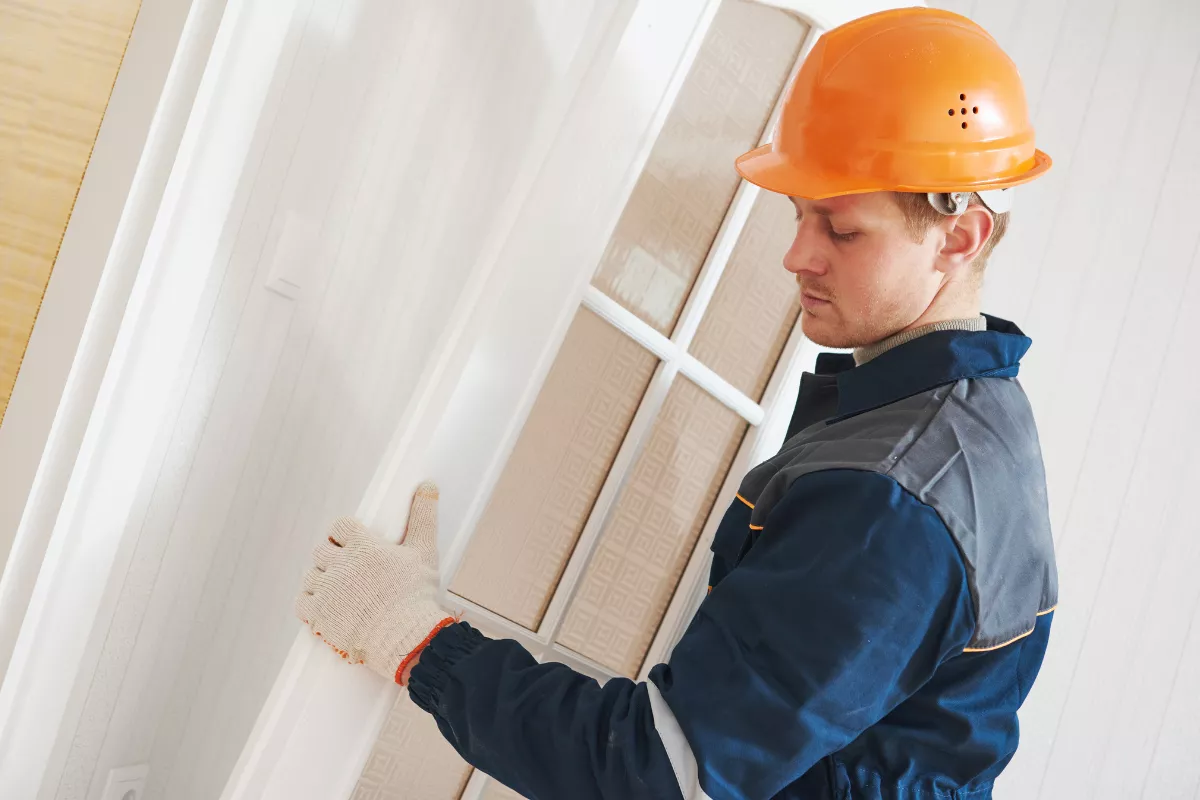Storm doors are an excellent addition to any home, offering extra protection against bad weather, annoying bugs, improving energy efficiency, and enhancing your home's curb appeal. These quick-install storm doors featuring a retractable screen are an excellent addition for enjoying a gentle breeze on lovely days while protecting your home from the elements during less favorable weather.
True to their reputation for being fast and simple to set up, you can have your new door up and running flawlessly in less than two hours.
Whether you're a seasoned DIY enthusiast or new to home improvement projects, installing a storm door is a manageable task with the right preparation and tools. This is when we get on the scene, to support you as you go through this task!
Can I Install a Storm Door by Myself?
Absolutely! Installing a storm door is a feasible DIY project for most homeowners. With basic handyman skills, a hacksaw, screw gun, a small level, and side cutters at your disposal, and a spare one to two hours, you can bypass the expense of hiring a professional for storm door installation.
Whether it's replacing an existing storm door or putting in a new one, this task makes for an ideal day-off morning endeavor, even for those with minimal woodworking abilities. The key to success is careful preparation, including measuring your doorway accurately and choosing a storm door that fits your needs and skill level.
Which Storm Door is the Easiest to Install?
Modern storm doors have been designed for simpler installation, offering a range of standard sizes to suit nearly every entrance. Similarly, magnetic screen doors can be set up quickly and effortlessly, without the need for specialized tools or skills.
Just make sure to clean the door frame thoroughly before installation to guarantee a secure and durable fit. Brands like Andersen and Larson offer storm doors with features like pre-drilled mounting holes and snap-in installation, which can significantly reduce the complexity and time involved in the installation process.
What is the Average Labor Cost to Install a Storm Door?
On average, installing a new storm door can range from $300 to $950, while replacing one might cost between $400 and $1,000. The price for just the door itself falls between $170 and $600, with installation labor fees ranging from $150 to $400.
Factors such as screens, specialized glass, and enhanced security features can increase these costs. When opting for professional installation, the labor price can significantly vary based on your location, the complexity of the job, and the chosen door type. It's important to remember that these installation costs are in addition to the storm door's purchase price.
What to Do Before Installing a Storm Door
Preparation is crucial before starting your storm door installation project. Here are a few steps to ensure you're ready:
Measure Your Doorway
Accurate measurements are essential. Measure the height and width of your door frame to ensure you choose a storm door that fits.
Check the Door Opening
Determine if your door opens inwards or outwards and the side of the hinges. This will affect the type of storm door you need.
Inspect the Door Frame
Ensure that the door frame is in good condition and not warped or damaged.
Gather Your Tools and Materials
Make sure you have all the necessary tools and materials before you begin.
How to Install a Storm Door: Step by Step
The effectiveness of even the best storm door hinges on the quality of its installation. Master the correct way to install a storm door with our comprehensive, step-by-step tutorial.
Unpack and Inspect Your Storm Door
This phase involves carefully removing the storm door from its packaging and laying out all the components to ensure that everything required for the installation is present and in good condition.
Install the Hinge Mounting Rail
To begin the installation, position the hinge mounting rail against the inner side of your door frame or the brickmould, following the specific guidelines provided in the instructions. Use a pencil to mark the midpoint of the top hole on the rail.
Then, drill a pilot hole at the marked spot and insert a screw to hold the rail in place temporarily. Be sure to leave the screw slightly loose, allowing enough room for the mounting rail to be adjusted beneath it. This screw will be fully tightened later in the installation process.
Affixing the hinge rail to the storm door's panel
Position the hinge rail on the top part of the storm door with the inner side facing upwards, ensuring that the hinges align with the pre-marked holes on the door. Create a pilot hole and fasten the top hinge using a hinge screw.
Then, proceed to the bottom of the door and gradually work your way up, drilling pilot holes at each point where the hinges align, and fasten them with screws to secure the hinge rail in place.
Insert the rail extender at the bottom end of the hinge rail, paying attention to use the correct one as they are labeled "L" for left and "R" for right, depending on the door's hinge orientation.
Attach the Door to the Hinge Rail
Position the upper part of the hinge rail over the initial placement screw you put in place earlier, and fully tighten the screw to fix the storm door in place, ensuring to lift slightly so that the hinge rail is snug against the door frame's top.
After aligning the hinge rail, drill a pilot hole at the bottom and fasten it with a screw. Pull down the rail extender until it touches the door frame's bottom. Proceed to drill the necessary pilot holes and attach the remaining screws to anchor the hinge rail firmly to the frame. Repeat this process on the hinge rail's exterior side.
Install the Latch and Strike Plate
Begin by positioning the latch mechanism on the door according to the manufacturer's instructions, ensuring it's placed at the correct height and aligned properly with the door's frame. Once in place, secure the latch with screws.
Next, align the strike plate on the door frame to match the latch's position, marking the screw holes. Drill pilot holes, then fasten the strike plate with screws. This step ensures the door latches securely, providing a tight seal and enhancing the door's overall performance.
Adjust for a Proper Fit
Make any necessary adjustments to ensure the door opens and closes smoothly and seals properly against the frame.
Install the Door Handle
Use this template to drill holes on both sides of the door, taking care not to drill too deeply to avoid piercing through the entire door. After drilling, detach the template and proceed with the installation of your storm door hardware.
It's important to note that handles are not uniformly included with storm doors, so the installation process for your hardware will vary based on the design and model you have selected. For accurate installation instructions, consult the manual provided with your handle set package.
Tools and Materials Required to Install a Storm Door
Before you begin, gather the following tools and materials:
- Tape measure
- Level
- Drill and drill bits
- Screwdriver set
- Hammer
- Pencil for marking
- The storm door kit, which should include all necessary hardware
Time-Saving Tips for Storm Door Installation
To expedite your storm door installation, start by thoroughly reading the instructions before you begin to familiarize yourself with the process and tools needed. Organize all parts and tools in advance to avoid interruptions.
Consider using a cordless drill to speed up the process of driving screws. When possible, assemble parts of the door, such as the handle and lockset, on a workbench before attaching them to the door frame to minimize awkward positions and save time.
Having a helper can streamline the process, especially for holding the door in place while you secure it. Lastly, measure twice and drill once to prevent any missteps that could prolong the installation.
People also ask
Can I install a storm door on any type of exterior door?
Most exterior doors can accommodate a storm door, but it's essential to check the manufacturer's recommendations and ensure your door frame is suitable.
Do I need to maintain my storm door after installation?
Yes, regular maintenance, such as checking screws, lubricating hinges, and cleaning, will extend the life of your storm door.
Can a storm door be installed on a door with sidelights?
Yes, but you'll need to ensure the storm door design accommodates the sidelights and that the installation doesn't interfere with their operation

 Marcio Vasconcelos
Marcio Vasconcelos





